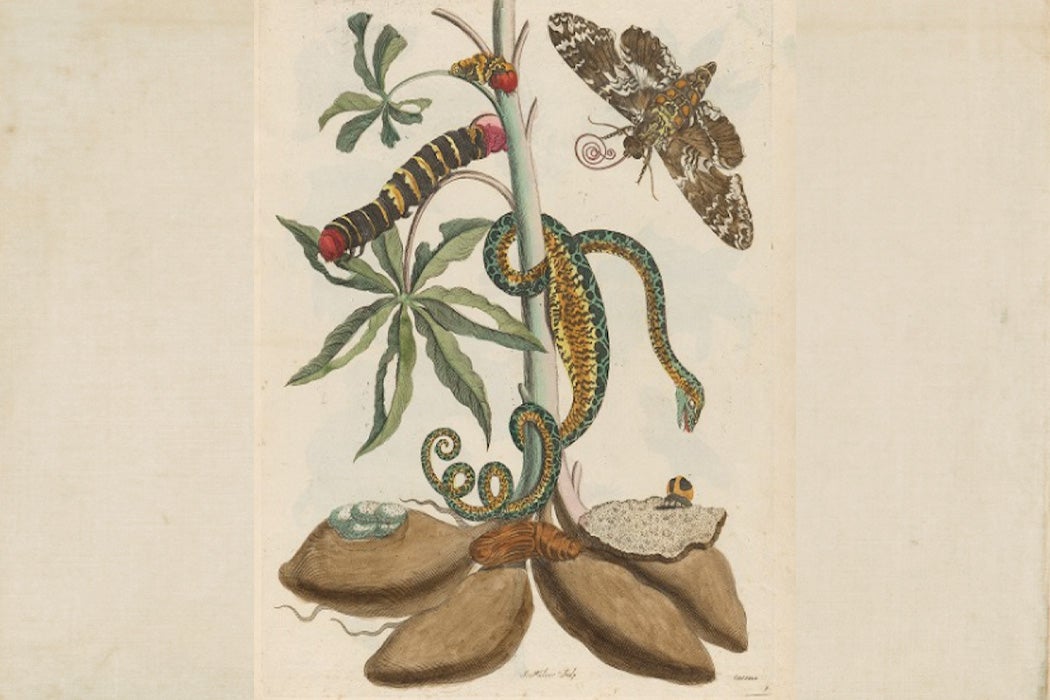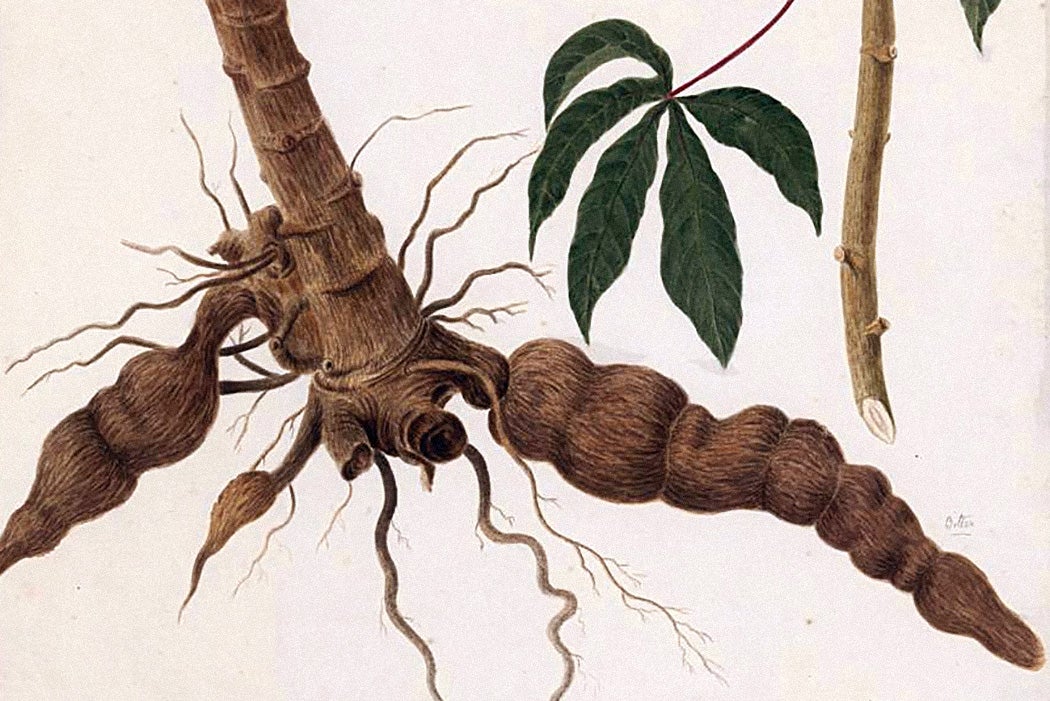The boba in your bubble tea, produced using tapioca extracted from cassava root, is not only a delicious snack. Rather, it could provide help in ameliorating the impacts of climate-induced food insecurity. “As the world gets increasingly hot, people are referring to [cassava] as a ‘survivor crop’” given the fact that it can grow in exceedingly hot climates, argued one recent podcast episode on the tuber. Indeed, scientists are pointing to projects attempting to breed cassava for specific traits as a potential way to “stabilize productivity without increasing pressures on limited natural resources” and calling it the “root crop of the century.”
The plant is one of the most important sources of calories in Africa, and, with organizations like the FAO extolling the crop amidst the climate crisis, it is set to grow even greater in significance. But behind this alleged panacea for the problems in our food systems as the world grows hotter lies a larger history of colonialism, knowledge transfer, and food circulation. The story of cassava reveals the way current efforts to fight the perils of the climate crisis rely on indigenous production methods that have circulated throughout the globe.
But, first, what is cassava? Cassava, or Manihot esculenta, is an incredibly starchy plant native to South America. According to agronomist Mabrouk A. El-Sharkawy, cassava is a perennial shrub which “may have been domesticated and cultivated for its starchy roots…before 4000 BC, on the Peruvian coast and in other parts of the Americas.” As El-Sharkawy writes, “the majority of cassava is grown in marginal, low-fertility acid soils with annual rainfall that ranges from less than 600 mm in the semiarid tropics to more than 1500 mm in the subhumid and humid tropics.” Cassava can thus grow in hot climates with varying degrees of rainfall.
Further, cassava requires a “low investment in capital and labor.” One Scientific American article noted that the crop “tolerates drought and acidic or infertile soils fairly well; quickly recovers from damage caused by pests and diseases; and is efficient at converting the sun’s energy into carbohydrates.” These reasons contribute to the overwhelming popularity of cassava: the article in Scientific American notes that the diet of 800 million people now centers on the tuber.
At first glance, cassava seems like a near-perfect crop. So it may be surprising to hear that without careful processing, it can actually be poisonous. Cassava—particularly bitter cassava— contains cyanogenic glucosides, which can cause cyanide poisoning. However, scholars have shown that bitter cassava is more productive than sweet cassava, given the fact that its cyanogenic glucosides protect the plant from both pathogens and pests. Perhaps because of this productivity, Andean peoples worked to neutralize the potentially dangerous impacts of the bitter cassava.
The Plant Humanities Lab at Dumbarton Oaks details the way in which Andean women learned to process cassava. According to the Lab, mitigating the cyanogenic glucosides in cassava is a “multi-step process that includes washing and grating cassava root, mashing it into a pulp, then hanging, dehydrating, and finally baking the dried pulp on a hot surface.” The straining of cassava pulp removes up to 90% of the potential toxins, and such methods are still employed today. Other techniques involve fermenting the cassava, then crushing and sieving the mixture.
Europeans worked to codify these indigenous strategies of production as part of the colonial encounter. The Plant Humanities Lab has shown that “as explorers, traders, and enslaved peoples moved across South America and the Caribbean and over the Atlantic Ocean to Africa, so too did cassava cultivars and indigenous knowledge of how to process the plant.” This codification of knowledge is detailed in the work of German-born naturalist Maria Sibylla Merian in her work Metamorphosis insectorum Surinamensium, held in Dumbarton Oaks Library. She describes how cassava was used in cassava bread, eaten by both Indigenous people as well as European colonizers. European texts like that of Merian highlighted “the original method of making cassava flour practiced by the Indigenous Peoples of South America.”
And, imperial agents did more than just codify knowledge of how to process cassava. Rather, they worked to spread cassava to colonies throughout the globe. Historian Obi Iwuagwu has detailed the process by which cassava was introduced to Nigeria. According to Iwuagwu, the crop was first introduced into the region by Portuguese colonizers in the sixteenth century. As he shows, the penetration of cassava into West Africa was a slow process. However, cassava ultimately became so important among the communities in Nigeria that one popular Igbo adage is that the “cassava that came to sustain life and ended up being the number one crop.”
European imperial agents heralded cassava as a crop which could alleviate the impacts of famine. One article on traditional cassava processing techniques argues that “the cultivation of cassava throughout tropical Africa increased rapidly during the 19th and early 20th centuries, sometimes as a result of encouragement or even enforcement by administrative authorities who recognized its value as a relief crop.” And, Lieutenant-Colonel Robert Kyd cited the fact that Governor de La Bourdonnais introduced cassava to Bourbon and Mauritius to alleviate the impacts of famine as evidence of the need to open a botanic garden in Calcutta.
The Taínos Refused to Grow Food. The Spanish Starved.
While the cassava’s circulation relied on European codification of indigenous practices, this was not a one-way transfer. Rather, new processing techniques emerged in this transfer that spread around the globe. The narrative in the Plant Humanities Lab goes on to describe how African women learned to prepare cassava leaves, which were not poisonous, through boiling them. Further, “another African innovation emerged in the form of gari, or toasted flakes, made from the dried pulp of the processed cassava,” which can be stored for a long time. These innovations transmuted cassava into an incredibly important source of calories through the African continent.
Weekly Newsletter
Scientists are aiming to increase the consumption of cassava both in Africa and beyond given the plant’s status as a “survivor crop.” As Spore reports, “many initiatives are now underway to develop new, high yielding, disease-resistance varieties [of cassava] with improved protein and beta-carotene content.” But even as cassava touted as a potential boon in the fight against climate-induced food insecurity, we must remember it is not a panacea and treat it with care. Indeed, in Southern Madagascar, a recent drought “ravaged farms,” including cassava plantations, sparking what some journalists call the “modern world’s first climate change-induced famine.” And, many are cautioning against the rise of cassava monocultures. Food writer Clarissa Wei, in a recent podcast episode with Whetstone Radio Collective, has shown how monocropping cassava increases diseases, which may or may not be solved with scientific breeding practices. Such discussions surrounding cassava recall heated debates surrounding the “Green Revolution” of the 1960s and 1970s, which many scholars argue harmed the environment and laborers.
It is not clear the future role cassava will play in global food systems. What is clear is that as we celebrate cassava’s potential as a “survivor crop” in the face of the climate crisis, we must also celebrate the knowledge of Andean and African people that made the cultivation and consumption of cassava possible. The Plant Humanities Initiative at Dumbarton Oaks explores the complex ways colonialism and indigenous knowledge work to shape our changing food systems today amidst the climate crisis.









